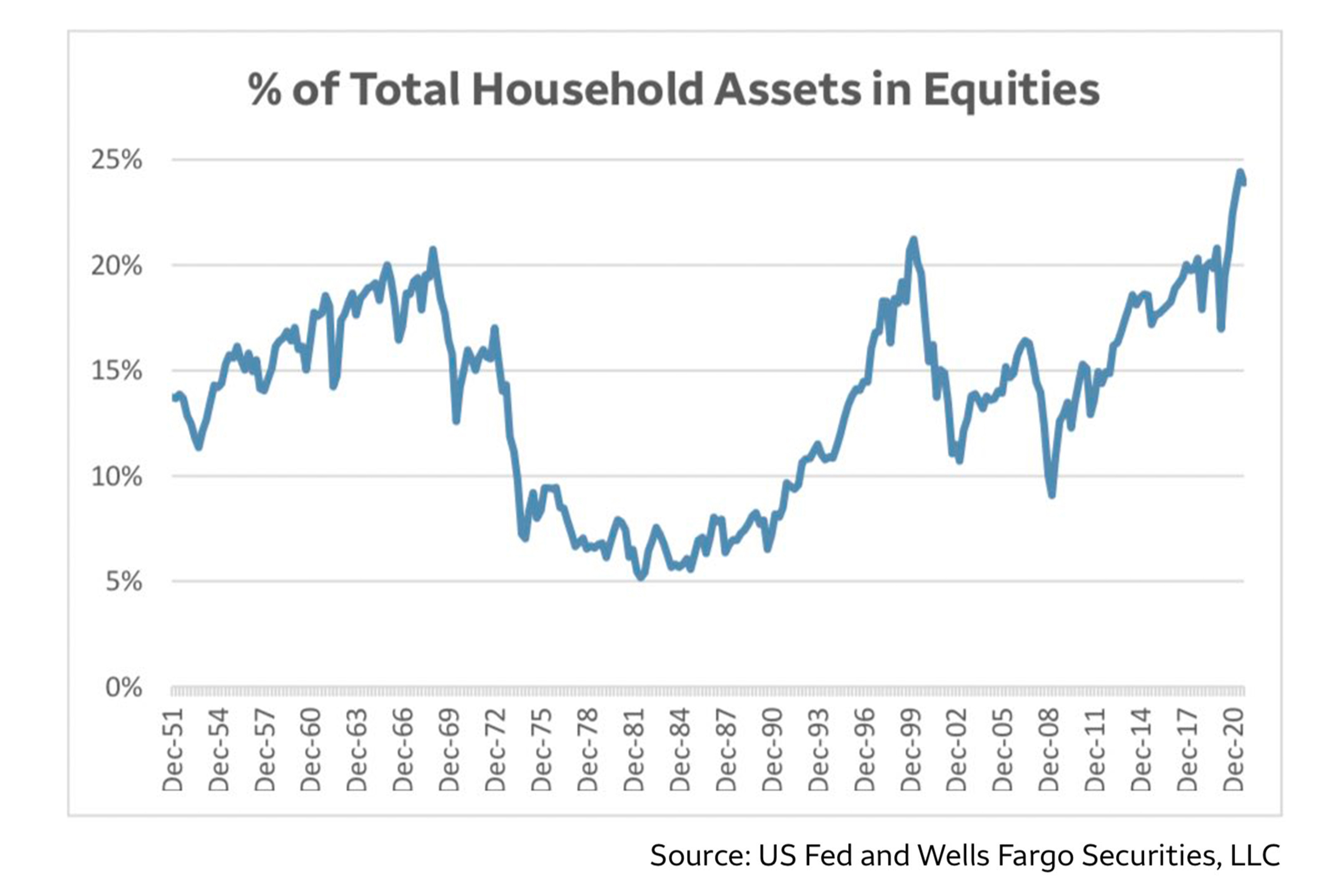
Americans' Wealth Is Getting More Concentrated in Stocks — and That Could Be a Big Problem
Investors can't get enough of stocks.
Stocks represent 24% of total household assets as of the end of September, according to a recent research note from Wells Fargo. That's up from only 13% a decade ago, and above the last major peak in equities in the first quarter of 2000.

The soaring level of stocks in portfolios may be a warning sign, according to Wells Fargo's equity analysts.
"The high equity allocation is indicative of what has happened, and in the past good things tended not to happen from elevated levels," the researchers wrote. They go on to write that they believe any sharp pullback in stocks over the next few months could have a pronounced impact on what is called the "wealth effect" — or consumers' inclination to keep spending money or not.
When the value of stocks rise, investors feel richer and are therefore more likely to go out and spend money, maybe on expensive holiday gifts or traveling. But the opposite is also true: A significant drop in the value of stocks could lead consumers to slow down or halt their spending, which would hurt the overall economy.
Humans are very emotional and are driven primarily by fear and greed, explains Sam Stovall, chief investment strategist at the investment research firm CFRA Research.
"So the greater the percentage of one’s retirement assets are in equities, the greater the volatility associated with stock-price fluctuations," he adds.
We've seen in the past how investors react when the market is particularly volatile, and the results sometimes aren't pretty.
When the market crashed in March of 2020 as COVID-19 hit the U.S., investors pulled $326 billion out of mutual funds and exchange-traded funds — more than triple the fund outflows seen in the previous monthly record, October 2008, according to Morningstar. (If investors had instead just held on, they could have doubled their money by August of 2021.)
Meanwhile, tons of new investors piled into the market during the pandemic when everyone was stuck at home without the ability to do some of their favorite hobbies, thanks partly due to trading apps like Robinhood, which allow investors to buy and sell stocks in a matter of seconds. A recent study from Charles Schwab found that 15% of U.S. stock market investors got their start in 2020.

The importance of a balanced investing portfolio
Not everyone is trading individual stocks. Back in 2016, Pew Research found that just 14% of American families are directly invested in individual stocks, but a majority (52%) have some investment in the market, mostly via retirement accounts like 401(k)s, which are dominated by mutual funds.
Always keep in mind that it's important to have a balanced portfolio, including funds that cover a broad mix of stocks from large and small companies, domestic and international companies and those from various industries, like technology, real estate and health care. You can check out Money's story previous story on diversifying your stock portfolio. And depending on your financial situation, age and risk tolerance, you likely want to include other assets in your portfolio, like bonds.
You also want to be sure to regularly check in on your portfolio and rebalance so that it continues to be aligned with your investing goals. Rebalancing refers to selling investments that have increased in value and replenishing investments that have decreased in value to get your portfolio back to holding its target weights so that your portfolio isn't too concentrated in one basket, like large tech stocks.
© 2021 LeackStat.com
